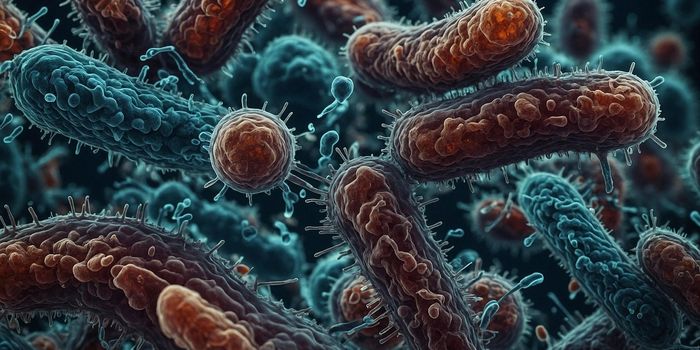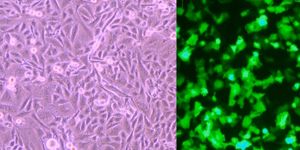Stuff in our world is made up of matter, composed of atoms, which means that everything is basically a chemical. But some of those chemicals can be quite harmful. In the modern world, we are exposed constantly to endocrine disrupting chemicals. These chemicals, both man-made and naturally produced, are able to interfere with the endocrine or hormone system and can cause health problems in humans and animals. According to the NIH, they can cause great harm especially during development. You can learn more about them in the video below.
One such endocrine disruptor is ethinyl estradiol (EE2), a component of both hormone replacement therapy and birth control pills that is present at low levels in drinking water. "Everyone is exposed to some environmental estrogens, and many pregnant women naturally produce a lot of this hormone," explained the co-lead author of the work, Leena Hilakivi-Clarke, a Professor of Oncology at Georgetown Lombardi. "The exposures may pose risks both in terms of breast cancer risk and tamoxifen resistance."
New work led by the Georgetown Lombardi Comprehensive Cancer Center and published in the Journal of National Cancer Institute has indicated that a lack of response sometimes seen in patients to the breast cancer drug tamoxifen could be due to in utero exposure to endocrine disrupting chemicals.
Tamoxifen is a common cancer drug and it isn’t useful to about half of the people that require it. "Higher estrogen levels in utero have been known to increase risk of estrogen positive breast cancer in laboratory animals -- and humans -- but it wasn't known until this study that these elevated levels may also be responsible for tamoxifen resistance," said Hilakivi-Clarke.
In this work, the investigators found four genes that are linked to poor breast cancer prognosis as well as tamoxifen resistance by utilizing animal models, cell lines from human breast cancers and datasets generated from thousands of breast cancers with estrogen receptors in patients treated with tamoxifen.
Interestingly, the research team determined that alterations in those identified genes could be reversed by using tamoxifen in conjunction with well tolerated drugs like valproic acid and hydralazine, that can elicit epigenetic changes.
"We have found that the same genes responsible for tamoxifen resistance in our animals are also turned off in human breast cancer cells that do not respond to the drug," continued Hilakivi-Clarke."Because these genes were epigenetically silenced -- meaning they were not irreversibly altered, just switched off -- it was possible to turn them back on. It remains to be determined if these genes are markers of in utero estrogen exposure in breast cancer patients.
"Tamoxifen is an excellent agent to use to both prevent breast cancer in high-risk women, and to reduce cancer recurrence in women who develop tumors, so our goal is to ensure that patients who use this drug can respond to it," Hilakivi-Clarke concluded.
Would you like to know more about estrogen receptor positive breast cancer? Check out the video above.
Sources:
NIEHS/NIH,
AAAS/Eurekalert! via
Georgetown University Medical Center, Journal of National Cancer Institute

![Master Lab Weighing: Accuracy, Compliance & Audits [eBook]](https://d3bkbkx82g74b8.cloudfront.net/eyJidWNrZXQiOiJsYWJyb290cy1pbWFnZXMiLCJrZXkiOiJjb250ZW50X2FydGljbGVfcHJvZmlsZV9pbWFnZV85MWRmZmRjMDIwNDBlMWJjMzYwN2ZiYWY2ZjI4ZGMzYzBmZGMwZGMyXzkxOTcucG5nIiwiZWRpdHMiOnsidG9Gb3JtYXQiOiJqcGciLCJyZXNpemUiOnsid2lkdGgiOjcwMCwiaGVpZ2h0IjozNTAsImZpdCI6ImNvdmVyIiwicG9zaXRpb24iOiJjZW50ZXIiLCJiYWNrZ3JvdW5kIjoiI2ZmZiJ9LCJmbGF0dGVuIjp7ImJhY2tncm91bmQiOiIjZmZmIn19fQ==)






